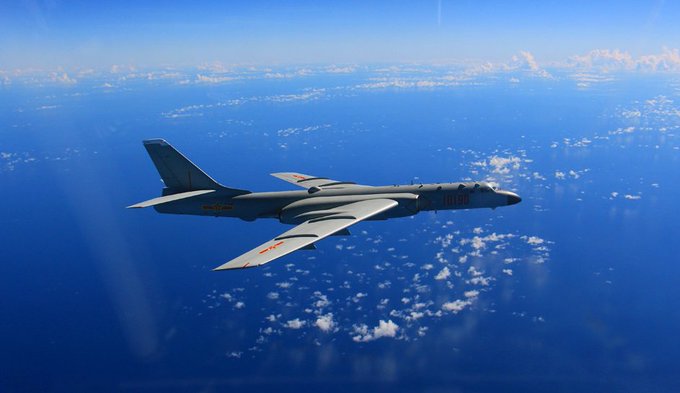BEIJING says it is building a new type of strategic bomber to ‘significantly increase’ the nation’s long-range strike capability amid escalating tensions in the South and East China Seas.
The People’s Daily, Global Times and South China Morning Post are reporting People’s Liberation Army Air Force chief Ma Xiaotian as revealing the long-range strategic bomber project to a military open day event Thursday.
Ma reportedly gave no details about the project other than “you will see it in the future”.
China has embarked on an expansive modernisation of its military, with many new types of combat aircraft, tank, warship and submarine entering service in the past decade.
The new aircraft would replace a recent addition to the budding superpower’s arsenal, the H-6K strategic bomber, which was revealed to the public only last year.
Fangwu CHN
This nuclear-capable aircraft has attracted world headlines in recent weeks after appearing in the skies above contested waters such as Scarborough Shoal in the South China Sea.
But the H-6K, while representing a major leap forward for China’s nuclear and conventional cruise missile strike capability, is actually based on the 1950s Russian Tu-16 ‘Badger’.
It also uses Russian supplied engines.

While built with modern avionics, sensors and equipment, the airframe’s aerodynamics are not at all stealthy or efficient by modern standards.
But, like the United States’ antiquidated B-52 ‘Stratofortress’ bombers, it is more than capable of lugging large cruise missiles — such as the DH-20 land-attack weapon — across large distances.
With this cruise missile, the H-6K is already capable of attacking targets in Australia.
Any new bomber, be it in the league of the United States 1980s swing-wing B-2 “Lancer” or 1990s super-stealth B-1 “Spirit”, would represent a significant improvement in capability.
Earlier this year, the United States awarded a contract to develop a new, cheaper stealth bomber to Boeing.
China’s annoucement comes amid new scandal relating to the F-35 strike fighter, the United States (and Australia’s) next generation multi-role combat aircraft.
Late last week a top Pentagon weapon’s tester stated the 10-year-late, trillion-dollar project was ‘on a path toward failing to deliver’.
Michael Gilmore said the fighter remains at ‘substantial risk’ of not being combat capable - using its full range of sensors, weapons and advanced integration systems.
This presents a particular problem to the F-35 as it is relatively slow and unmanouvrable compared to other combat jets, instead relying entirely on its advanced computers and steath to deliver its limited payload accurately.
B-2 Spirit in flight
Originally published as China boasts of new ‘super bomber’



No comments:
Post a Comment